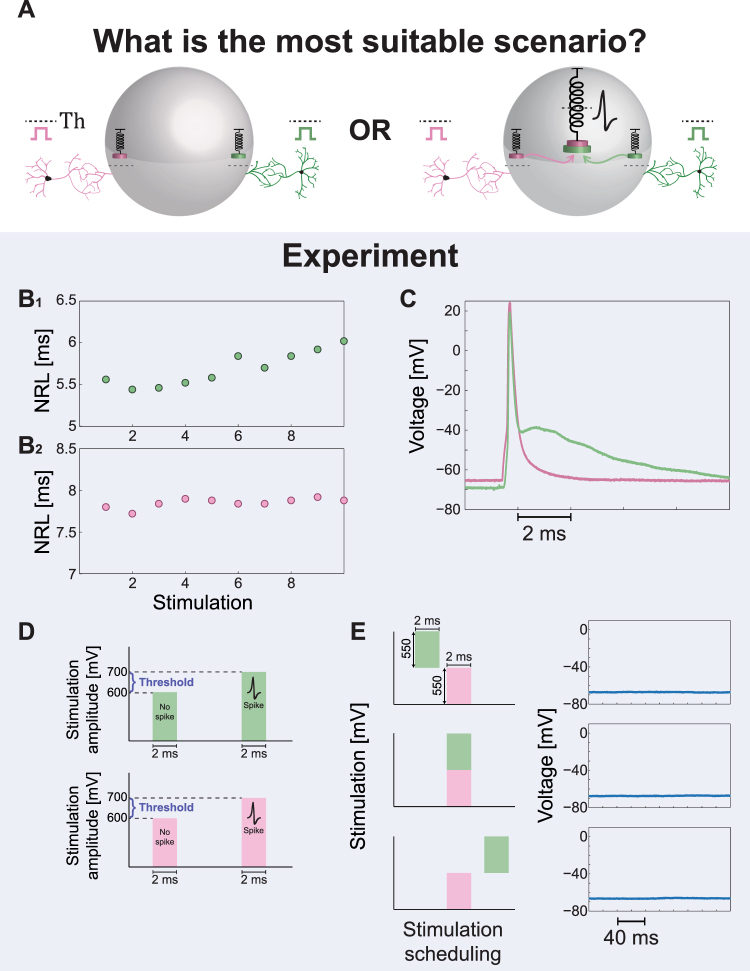Figure 4.
The Absence of Spatial Summation in Simultaneous Stimulations from Two Different Sources. (A) Possible scenarios for a neuronal computational model, where the neuron is simultaneously stimulated by two sub-threshold stimulations arriving from two extracellular electrodes. The amplitude of each sub-threshold stimulation is significantly above one half of its threshold. Left scenario demonstrates the lack of spatial summation, where each dendrite is coupled to an independent threshold mechanism. Although the sum of the two signals is above-threshold an evoked spike is absent (Model III in Fig. 1C). The right scenario presents a spike generated by the central threshold mechanism which sums all incoming signals (Model I or II in Fig. 1C). (B) The measured NRL for the two extracellular electrodes (green/pink in B1/B2), showing the stability of the NRLs around a different value for each one of the extracellular electrodes. (C) Intracellular recordings of the spike waveforms for the green and the pink extracellular electrodes (similar to Fig. 2A2) when stimulated above-threshold. The distinct different spike waveforms are visible. (D) The threshold of each one of the two electrodes was estimated using stimulation pattern of 2 ms duration and varied amplitudes (see Methods). For both electrodes reliable evoked spikes were observed at an amplitude of 800 mV, where at an amplitude of 500 mV no evoked spikes were observed. Hence, the threshold is in the range of (500, 800) mV and a stimulation of 500 mV is significantly above a half of the threshold. (E) The neuron is stimulated by the two extracellular electrodes, using a stimulation patterns of 2 ms as in (D) and 550 mV (~0.8 of the threshold, Th, of each electrode), and recorded intracellularly. Based on the prior knowledge of the NRLs in (B), the time-lags between the two stimulations were dynamically adjusted by relatively shifting the stimulation timings of the green electrode (see Methods). Specifically, the green stimulation was adjusted from a partial overlap with the pink stimulation, to a complete overlap and finally to non-overlapping timings (left). All scenarios did not result in evoked spikes, but in a negligible local depolarization independent of the relative timings between the two extracellular stimulations (right).

